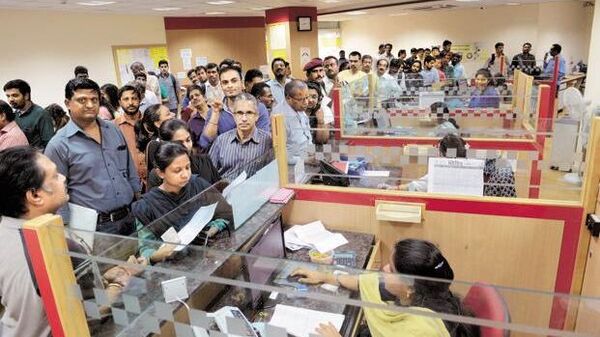 Industry
Industry
Banks see bad assets rise after long gap as agri, retail provisions surge

Summary
- Q1FY25 saw several banks and large NBFCs flagging a rise in delinquencies, especially in the agricultural, rural, microfinance and unsecured retail portfolios as collections and recoveries were hit by disruptions related to elections and heatwaves in parts of the country.
Mumbai: Non-performing assets (NPAs) are making banks uneasy again in the first quarter of FY25 even as their struggle to mobilise deposits continues. This has happened on the back of a surge in delinquencies for retail, microfinance and agriculture loan portfolios due to seasonal factors, as well as election-related disruptions.
Even though the sequential rise in NPAs appears marginal, it is still creating some nervousness as it has come after several quarters of steady to healthy asset quality.
Lenders such as HDFC Bank, Axis Bank, Mahindra Finance and IndusInd Bank saw a sequential rise in gross non-performing assets (NPA), leading to higher provisioning requirements.
For example, provisions and contingencies for ICICI Bank rose 85.4% on-quarter and 3.07% on-year, whereas for Axis Bank they rose by 72.07% sequentially and 97% on-year, according to the Q1 financials reported by these companies. Then, Federal Bank’s provisions were 141% higher on-quarter and 10% on-year, and IndusInd Bank’s were 10% higher on-quarter and 6% on-year.
Fall in provision coverage ratios
Further, a higher pace of increase in their slippages and delinquencies compared to the rise in provisions, led to a fall in provision coverage ratios for several lenders such as ICICI Bank, Bajaj Finance and Federal Bank, which otherwise saw stable asset quality ratios.
Provision coverage ratio (PCR) across the lenders fell to 56.1-79.7% in Q1 FY25 from 57.0-80.3% in the previous quarter, and 60.4-82.4% in the year ago period, signalling that lenders have started to tap into their buffer provisions to meet the higher provisioning requirements.
Analysts have also started evaluating whether the deteriorating asset quality in the June quarter is a turning point. “With Axis joining Bajaj Finance in reporting higher credit costs, the key question is: have we reached the end of the benign asset quality phase?" Pranav Gundlapalle, senior research analyst at Sanford C Bernstein, said in an email to clients on 24 July.
The return of the NPA?
Most banks have seen improving to steady loan portfolio quality since the end of the covid pandemic led by strong collections and recoveries, and timely repayments. While the past few quarters saw banks struggling with deposit mobilisation leading to lower margins, their overall financials remained healthy owing to decadal-best asset quality ratios.
However, Q1 FY25 saw several banks and large NBFCs flagging a rise in delinquencies, especially in the agricultural, rural, microfinance and unsecured retail portfolios.
Also read | Mint Explainer: How the health of Indian banks has improved over the past decade
While banks such as HDFC Bank attributed the rise to cyclical stress in the agriculture and microfinance portfolios in the first quarter, others such as Bajaj Finance, Axis Bank and IndusInd Bank said that collections and recoveries were hit due to disruptions related to elections and heatwaves in several parts of the country.
Lenders also hinted at rise in delinquencies in unsecured retail loans such as personal loans and credit cards, due to decrease in borrowers’ repayment ability. IndusInd Bank said that rural borrowers still seem to be coming out from the impact of the pandemic whereas Bajaj Finance highlighted a 3% increase in the number of customers who have already borrowed from other lenders.
Also read | India’s bad bank aims at ₹2 trillion stressed assets by September
The direct hit of the rise in delinquencies, especially from stage 1 (up to 30 days past due or dpd) to stage 2 (up to 60 dpd), was visible in the increase in loan loss provisions for lenders as stage 2 assets attract higher provisioning requirements.
Further, several lenders also utilised floating or contingent provisions to proactively write off bad loans, especially small-ticket unsecured loans, adding to the pressure on provisioning requirements for the quarter.
This, in turn, led to flat-to-higher net NPA ratios—calculated as gross NPAs net of provision coverage on such loans—and lower provisioning stock at the balance sheet level.
Also read | Losses have been cut, and it’s time to privatize India’s public sector banks
“It is but obvious that recoveries cannot continue at the same pace as we have seen in the previous few years, so that has to come down and, therefore, reported credit costs will inch up as it is net-off recoveries. Issue is there has also been some pick up in stress in the unsecured segment," said Suresh Ganapathy, managing director and head of financial services research at Macquarie Capital, adding that the current levels were “too good to be true" and there is some element of overleveraging in the system.
Collections not a concern
Meanwhile, most lenders have guided that the collection disruptions look to be transient as recoveries have started improving July onwards and incremental slippages are expected to be curtailed.
Even so, they highlighted that they remain watchful of stress, both in the rural and unsecured portfolios, and will only have better visibility on portfolio quality trends from the third quarter of FY25.
While most banks have reiterated the credit cost guidance for FY25 despite the rise seen in Q1, managing incremental provisioning pressures amid muted collections and tight liquidity conditions could lead to some normalisation in asset quality ratios in the coming quarters, according to analysts.

